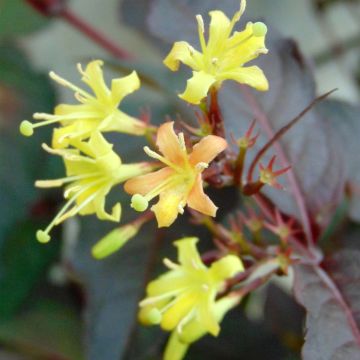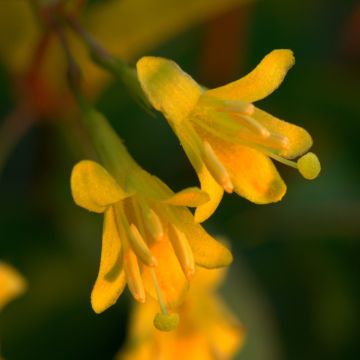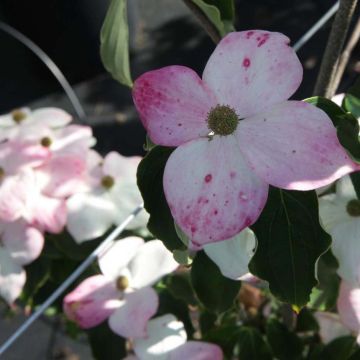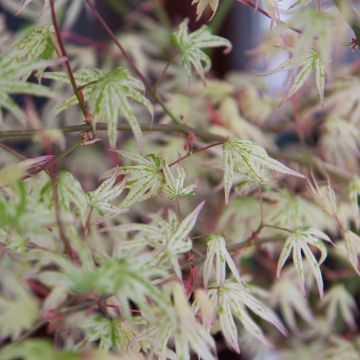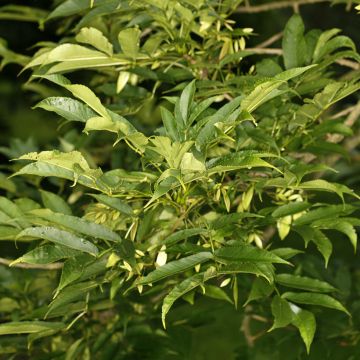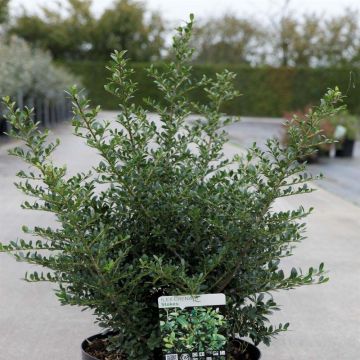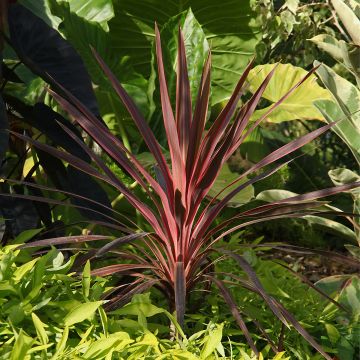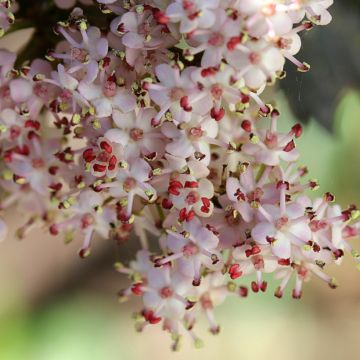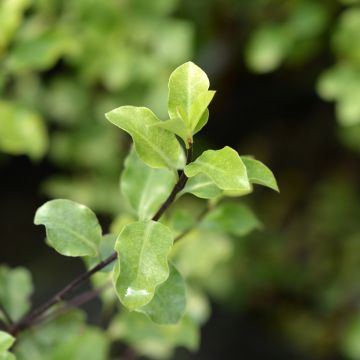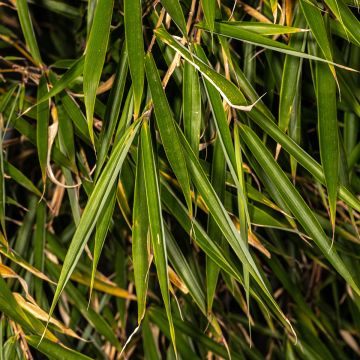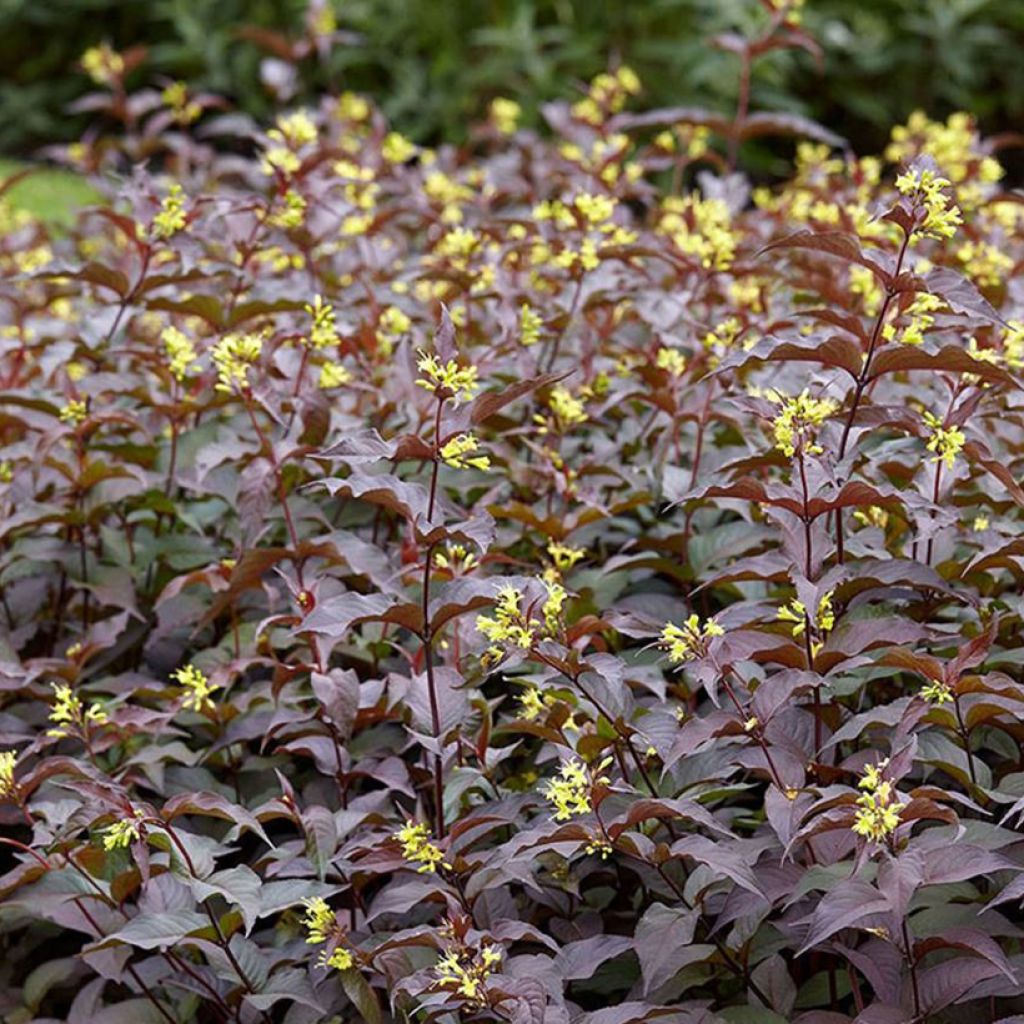

Diervilla rivularis Troja Black - Diervillée
Diervilla rivularis Troja Black
Diervilla rivularis Troja Black
Mountain Bush Honeysuckle
This item cannot be shipped to the selected country
Delivery charge from €5.90
Delivery charge from €5.90
More information
Schedule delivery date,
and select date in basket
This plant carries a 24 months recovery warranty
More information
We guarantee the quality of our plants for a full growing cycle, and will replace at our expense any plant that fails to recover under normal climatic and planting conditions.
From €5.90 for pickup delivery and €6.90 for home delivery
Express home delivery from €8.90.
From €5.90 for pickup delivery and €6.90 for home delivery
Express home delivery from €8.90.
Does this plant fit my garden?
Set up your Plantfit profile →
Description
The Diervilla 'Troja Black' is a small bushy plant of interest from spring to autumn due to its changing foliage colour and long summer flowering. Slightly suckering, this close relative of weigelas and honeysuckles likes partial shade and blooms there for several weeks in summer, in clusters of light yellow to orange, enhanced by the purple-green and violet colours of its foliage. The diervilla adapts to all exposures, it can tolerate some drought and the root competition of large trees.
The Diervilla Troja Black is a horticultural selection derived from the Diervilla rivularis, a species native to the understory of the southern United States. This suckering bush of the Caprifoliaceae family has a bushy but spreading habit, with multiple stems originating from the base and the ability to cover the ground quite effectively. When mature, it reaches about 1m (3 ft 4 in) in all directions, with its lateral growth being quite easy to control by removing suckers or by planting other vigorous woodland plants alongside it. Its foliage is composed of oval, elongated, pointed leaves, slightly crinkled and shiny. The leaves are bronze-purple in spring, then partially turn purple-green in summer, before taking on a purple-violet hue in autumn. At the end of the season, the leaves dry up and fall off. Its summer flowering, appreciated by pollinating insects, takes place from July to August-September. Its light yellow flowers tinged with orange, arranged in clusters, will bloom on the previous year's branches, with a lovely purple colour. This diervilla offers abundant flowering, even in shaded areas and in the roots of trees where it particularly thrives. The highly contrasting colours of the foliage and flowers create a striking effect. The Diervilla rivularis is less resistant to drought than its cousin, the Diervilla x splendens, but it can tolerate occasional dry periods.
Low-maintenance, the Diervilla 'Troja Black' is adapted to all exposures and all types of soil, without excessive limestone and not too dry. Its small size is ideal for small gardens, enclosed spaces, or sloping soils. It retains and stabilises slopes thanks to its suckers (underground stems carrying roots). It is also an ideal choice for filling in an undergrowth. It will work very well in a rose garden or in combination with medium-sized perennials such as Japanese anemones or heucheras, and variegated foliage shrubs such as the Ivory Halo dogwood.
Report an error about the product description
Plant habit
Flowering
Foliage
Botanical data
Diervilla
rivularis
Troja Black
Caprifoliaceae
Mountain Bush Honeysuckle
Cultivar or hybrid
Other Diervilla
Planting and care
The Diervilla Troja Black is a plant that can grow well in different types of soil and light conditions depending on the area you live in. Cooler areas with full sun will suit this plant, while warmer areas will require partial shade or full shade. The soil should be well-prepared, moist, and rich, but not too dry or chalky. To promote abundant flowering, it's best to prune the branches in late autumn or winter, and to cut the plant shorter every three years.
Planting period
Intended location
Care
This item has not been reviewed yet - be the first to leave a review about it.
Striking foliage shrubs
Haven't found what you were looking for?
Hardiness is the lowest winter temperature a plant can endure without suffering serious damage or even dying. However, hardiness is affected by location (a sheltered area, such as a patio), protection (winter cover) and soil type (hardiness is improved by well-drained soil).

Photo Sharing Terms & Conditions
In order to encourage gardeners to interact and share their experiences, Promesse de fleurs offers various media enabling content to be uploaded onto its Site - in particular via the ‘Photo sharing’ module.
The User agrees to refrain from:
- Posting any content that is illegal, prejudicial, insulting, racist, inciteful to hatred, revisionist, contrary to public decency, that infringes on privacy or on the privacy rights of third parties, in particular the publicity rights of persons and goods, intellectual property rights, or the right to privacy.
- Submitting content on behalf of a third party;
- Impersonate the identity of a third party and/or publish any personal information about a third party;
In general, the User undertakes to refrain from any unethical behaviour.
All Content (in particular text, comments, files, images, photos, videos, creative works, etc.), which may be subject to property or intellectual property rights, image or other private rights, shall remain the property of the User, subject to the limited rights granted by the terms of the licence granted by Promesse de fleurs as stated below. Users are at liberty to publish or not to publish such Content on the Site, notably via the ‘Photo Sharing’ facility, and accept that this Content shall be made public and freely accessible, notably on the Internet.
Users further acknowledge, undertake to have ,and guarantee that they hold all necessary rights and permissions to publish such material on the Site, in particular with regard to the legislation in force pertaining to any privacy, property, intellectual property, image, or contractual rights, or rights of any other nature. By publishing such Content on the Site, Users acknowledge accepting full liability as publishers of the Content within the meaning of the law, and grant Promesse de fleurs, free of charge, an inclusive, worldwide licence for the said Content for the entire duration of its publication, including all reproduction, representation, up/downloading, displaying, performing, transmission, and storage rights.
Users also grant permission for their name to be linked to the Content and accept that this link may not always be made available.
By engaging in posting material, Users consent to their Content becoming automatically accessible on the Internet, in particular on other sites and/or blogs and/or web pages of the Promesse de fleurs site, including in particular social pages and the Promesse de fleurs catalogue.
Users may secure the removal of entrusted content free of charge by issuing a simple request via our contact form.
The flowering period indicated on our website applies to countries and regions located in USDA zone 8 (France, the United Kingdom, Ireland, the Netherlands, etc.)
It will vary according to where you live:
- In zones 9 to 10 (Italy, Spain, Greece, etc.), flowering will occur about 2 to 4 weeks earlier.
- In zones 6 to 7 (Germany, Poland, Slovenia, and lower mountainous regions), flowering will be delayed by 2 to 3 weeks.
- In zone 5 (Central Europe, Scandinavia), blooming will be delayed by 3 to 5 weeks.
In temperate climates, pruning of spring-flowering shrubs (forsythia, spireas, etc.) should be done just after flowering.
Pruning of summer-flowering shrubs (Indian Lilac, Perovskia, etc.) can be done in winter or spring.
In cold regions as well as with frost-sensitive plants, avoid pruning too early when severe frosts may still occur.
The planting period indicated on our website applies to countries and regions located in USDA zone 8 (France, United Kingdom, Ireland, Netherlands).
It will vary according to where you live:
- In Mediterranean zones (Marseille, Madrid, Milan, etc.), autumn and winter are the best planting periods.
- In continental zones (Strasbourg, Munich, Vienna, etc.), delay planting by 2 to 3 weeks in spring and bring it forward by 2 to 4 weeks in autumn.
- In mountainous regions (the Alps, Pyrenees, Carpathians, etc.), it is best to plant in late spring (May-June) or late summer (August-September).
The harvesting period indicated on our website applies to countries and regions in USDA zone 8 (France, England, Ireland, the Netherlands).
In colder areas (Scandinavia, Poland, Austria...) fruit and vegetable harvests are likely to be delayed by 3-4 weeks.
In warmer areas (Italy, Spain, Greece, etc.), harvesting will probably take place earlier, depending on weather conditions.
The sowing periods indicated on our website apply to countries and regions within USDA Zone 8 (France, UK, Ireland, Netherlands).
In colder areas (Scandinavia, Poland, Austria...), delay any outdoor sowing by 3-4 weeks, or sow under glass.
In warmer climes (Italy, Spain, Greece, etc.), bring outdoor sowing forward by a few weeks.

































